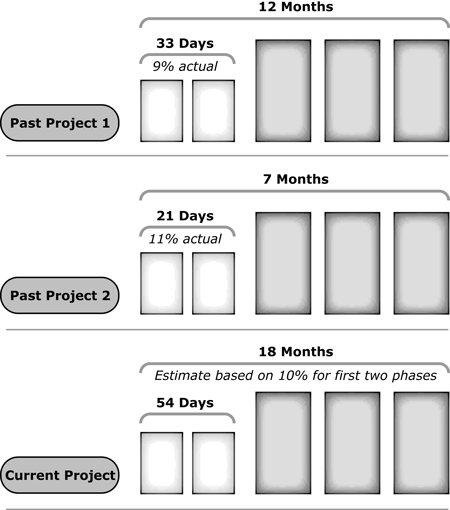Project Managers Can Shine in Today’s Tough Economy
In service companies, people have characterized sales people as the ones who bring in revenue to a company, but project managers as the ones that translate that revenue into profit. Project managers are the ones who lead in the creation of value for project stakeholders.
Yes, I admit that, in most projects, project managers are not creating deliverables that will drive business value for their clients. However, project managers are the ones who focus the rest of their teams on the right goals, and then lead the team on a journey towards meeting those goals. If the right goals are chosen, then incremental business value can result from the project.
In an economy where the word “recession” has been in the headlines for the past two to three years, using incremental business value as the measure of project success has become more and more common in the marketplace. Project managers are being asked more and more to track financial benefits along with financial costs, and to document business case justifications inside their change authorization forms.
While the ability to read business cases and financial statements has always been required of senior PMs, the requirement that PMs create these documents and link business benefits to business strategy is more recent. In my experience, I have seen that the extreme emphasis on business value can be linked to economic cycles: when times are good, more projects get approved with “soft” benefits like improvements in customer service; while in hard economic times, projects need to deliver “hard” benefits, valued in dollars.
But aside from juggling the numbers in various reports and documents, how else does this affect the role of the PM? I believe that economic downturns allow the more experienced, “senior” PMs to differentiate themselves from those more junior – specifically in the area of business strategy.
I like to work directly with the project executive sponsor as a partner in helping them to make their business case a reality. This partnership paradigm is not just a feel-good word – it drives significant behavior changes. I believe that what distinguishes the very best PMs from the rest of the crowd is this partnership mindset.
Being a partner to the project sponsor means that I will be their trusted advisor in providing opportunities (or alternative approaches) for the project that will help him or her achieve project goals, in the most effective way possible. This improved effectiveness is measured using phrases like increased return on investment, lower project risk, better integration with external projects, etc. To communicate these benefits to the sponsors, project managers must stay away from jargon like “earned value” or any of the technical terms used by the delivery team: talk to the sponsors in their own (business) language.
On technology projects, this is critically important. The technical jargon and technical issues can overwhelm business executives who don’t have the background to be able to understand the implications of many of these terms in order to make appropriate decisions. As a result, when they have had technical issues discussed with them in the past (using technical terms) they don’t understand the underlying message, and as a result they experience “surprises” later when the true impacts of the issues arise. I’ve heard many executives talk with deep disappointment about “technology projects that always take far longer and cost much more than originally planned.” With frequent cost overruns, executives have lost confidence in their delivery teams (and with good reason).
To reestablish trust with the business, technology delivery leaders need to learn to speak in the business’s own terms. In effect, use “MBA-speak” – the jargon of the business world. By speaking in business terms and taking the time to truly understand the business case behind the project, the PMs will soon be seen as “peers” of the sponsor, and soon can move towards being seen as a “partner” in helping the sponsor achieve his or her goals.
Another technique I use to speed up the process of being seen as a partner is to seek out the hidden agenda of the sponsor. In other words, to uncover what personal objectives the sponsor would like to achieve alongside the project objectives. I explain that I can plan a project a hundred different ways that will each achieve the project goals, but only some will help the sponsor achieve his or her own personal goals. By having a frank discussion about his or her own performance measurements, commitments they made to their boss (or that their boss has made) and other similar items, I can present strategic options for structuring the project to make the sponsor more successful in their personal or career endeavors. This will help build long-lasting, partnership-based relationships that can last across multiple projects.
In a down economy, companies are looking for ways to cut costs – often including the dismissal of underperforming staff. As a project manager, your own performance may be measured based upon the success of your projects and the happiness of your sponsors. And experienced PMs know that building a strong relationship with a sponsor can mean the difference between project success and project failure. By taking the approaches mentioned above, you can position yourself as the trusted partner – one who is too valuable to consider dismissing – and better protect yourself from downsizing during a recession.
Don’t forget to leave your comments below
